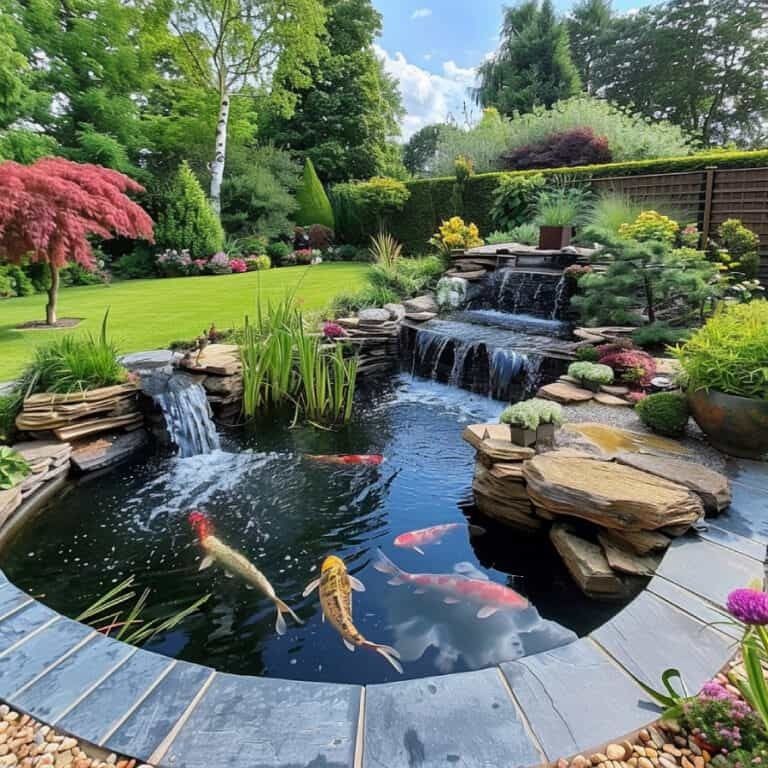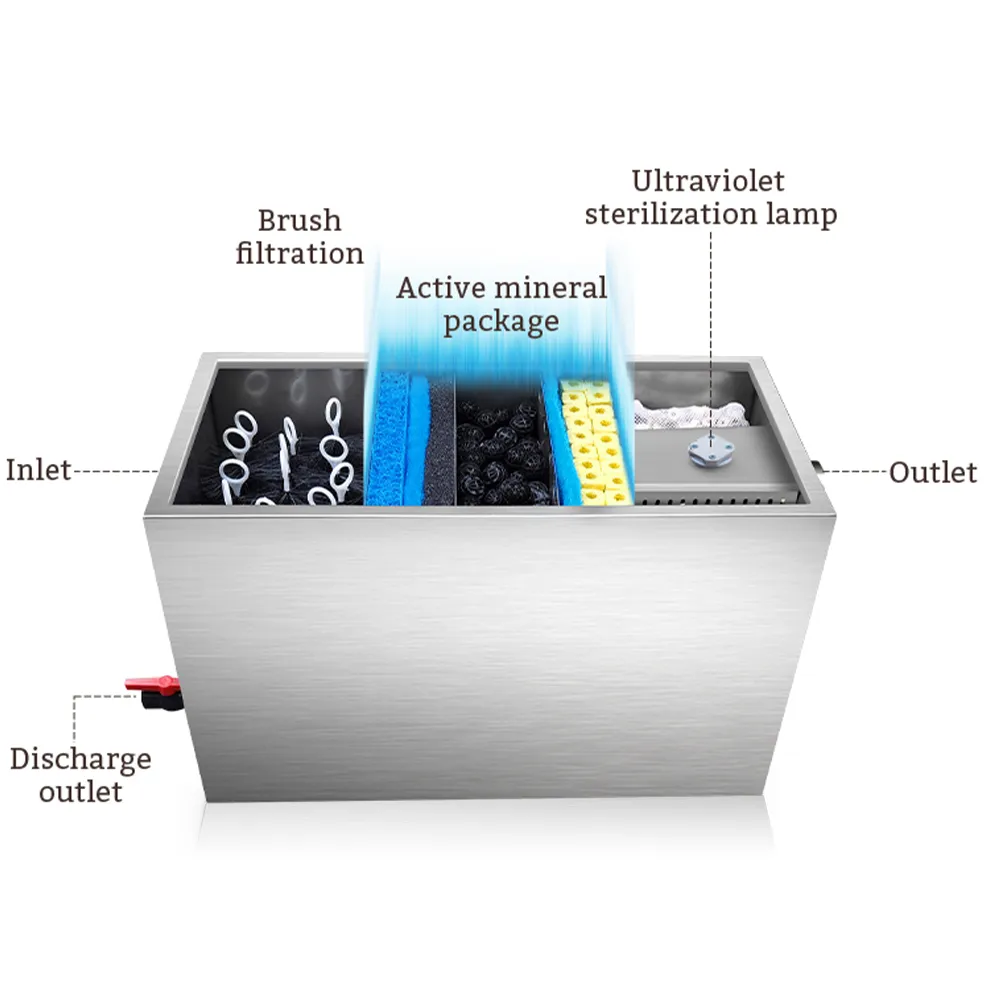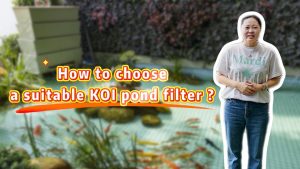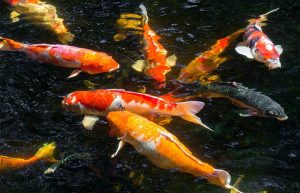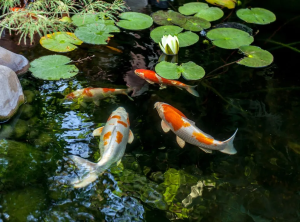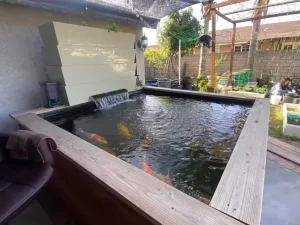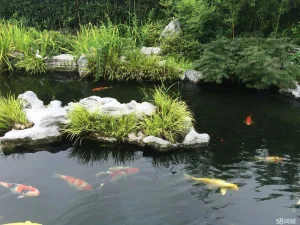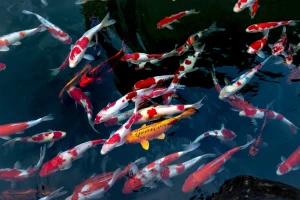Want a fish pond with crystal clear water? Want to see fat, colourful koi or ornamental fish swimming freely? This can only be achieved with the right pond filter. Nobody likes a smelly pond. But due to the large size and high appetite of fish such as koi, an effective filtration system should be installed in your koi pond if you want to prevent the build-up of nitrogenous waste and keep the water clear and healthy. Failure to deal with nitrogenous waste and debris such as particles and leaves can have a negative effect on the health of your fish. And it can affect the aesthetics of the pond and even lead to the death of the fish. Not only nitrogenous wastes are metabolised, but also all kinds of ammonia, nitrites, and all kinds of nitrates.
Maintaining and servicing a koi pond is a long term task that doesn’t end with just one or two disinfections. So choosing an efficient filtration system is key to ensuring clean water and healthy fish growth in your koi pond. Especially for large koi ponds with huge amounts of clean water, the choice is even more critical.
Key factors in selecting a koi pond filter
1. Filtration capacity
Koi ponds, especially larger ones, require a higher level of water treatment. Make sure that the filter can handle the entire pond’s water volume and still work effectively at high loads.
2. Types of filtration
Different filters have different types of filtration, including mechanical, biological and chemical filtration. Large koi ponds require a comprehensive filtration system to ensure total water purification.
Chamber filters
Chamber filters have been popular in the pond sector for many years, where pond water is passed through several chambers containing different filter materials, such as filter brushes, filter pads and foam. The water is thus mechanically filtered. But this one, because it is installed at the bottom, can easily be overwhelmed by the debris produced in the case of ponds with larger volumes. And it is not as easy to clean.
Pressure filters
For small garden ponds with few fish (up to 15,000 litres), pressure filters are also a solution. However, due to the lack of flexibility in terms of positioning, they are gradually being replaced by more flexible filter types.
For larger ponds, there will be more leaves and other organic matter, this is when a pre-filter is used to ensure that coarse dirt is removed and does not clog the pond filter.
Sieve Filter
In a sieve filter, pond water flows through a curved sieve so that the coarser dirt remains on the sieve and the “sifted” water flows out of the sieve into the main filter.
Drum filters
Drum filters are fully automatic pre-filters. The water passes through the inlet chamber into the drum filter and then into the drum type screen, the drum is equipped with SS316L screen mesh which filters out impurities in the water larger than 75 microns. Meaning that dirt particles larger than 0.075mm cannot pass through the mesh. It will be able to filter the impurities in the water better.
Biological main filter
After the pre-filter filters out the coarse waste from the pond water, it goes to the main filter. The Biochemical Bin Aeration Filter type a pressure vessel filled with biochemical aeration packing beads which perform biological filtration. Bacterial impurities are allowed to attach to the beads and break down harmful substances such as ammonium, nitrites and nitrates.
3. Ease of maintenance
Fish pond filters, especially large ones, are sometimes complex and can add to the workload and cost. Choosing filters that are easy to clean and maintain, or semi-automatic filters and fully automatic filters, can effectively reduce cleaning and maintenance time, as well as costs.
4. Energy consumption
Large koi pond filtration systems usually run longer because of the larger volume of water. So choosing an energy efficient filter can significantly reduce running costs.
Choose a well-known brand of filter, quality is guaranteed and after-sales service is more perfect.
A few recommended high efficiency koi pond filters
Not only does this filter offer powerful filtration, but it also comes with a powerful UV germicidal light, biochemical bin filtration, and a smart timed liquid sensing system. The semi-automatic design of this one maintains constant water flow and efficient filtration, making it ideal for medium to large koi ponds.
This filter not only provides great filtration, but also creates a beautiful waterfall view. Its four-layer stacking design also allows more space for bacteria cultivation. The hollow drip design can increase the oxygen content in the water. Together with the biological filter material and mechanical filter, it can effectively purify the water, and also increase the aesthetics and landscape effect of the fish pond.
3. Recommendations for installation and maintenance
1. Installation location
Ensure that the filter is installed in a place that is easy to access and maintain. Also place on a level surface. The bottom centre area of the filter is heavy due to the amount of water in the filter. It needs to have load-bearing support points, otherwise it is easy to cause deformation of the box and thus affect the use of the effect. Also pay attention to avoid direct sunlight, which can extend the service life of the filter equipment.
2. Regular maintenance
According to the instruction manual or our use video, carry out regular cleaning and replacement of filter media to ensure the efficient operation of the filtration system.
3. Monitoring water quality
Regularly test water quality parameters with testing instruments. For example, pH, ammonia concentration and dissolved oxygen content to ensure the effectiveness of the filtration system.
